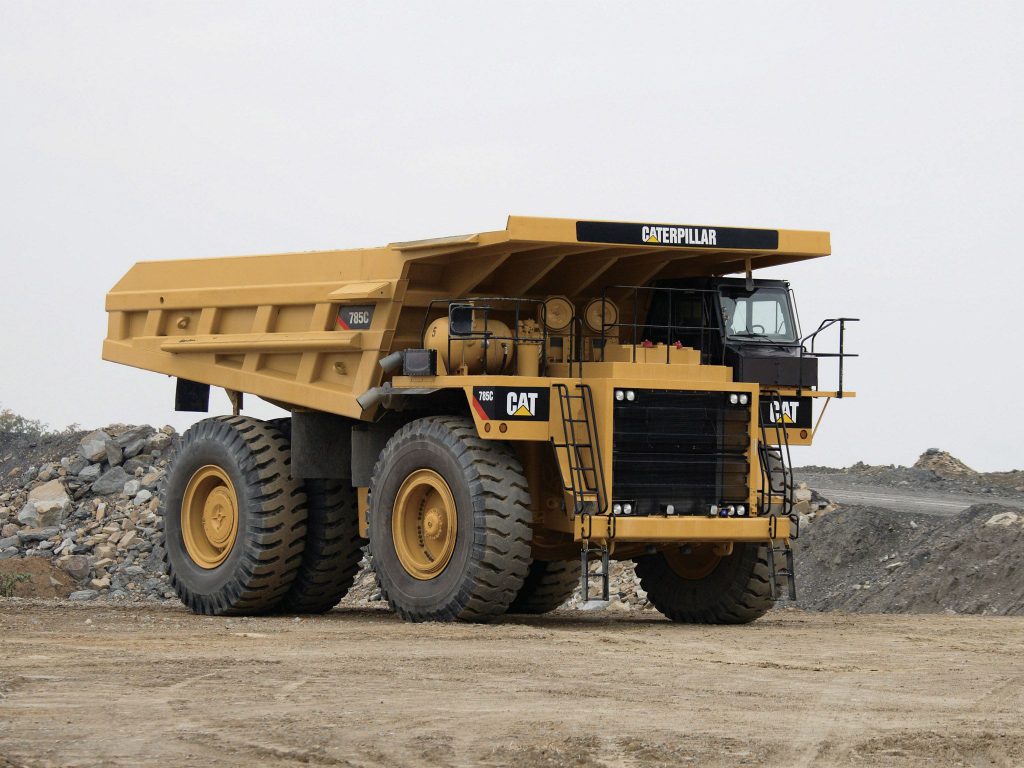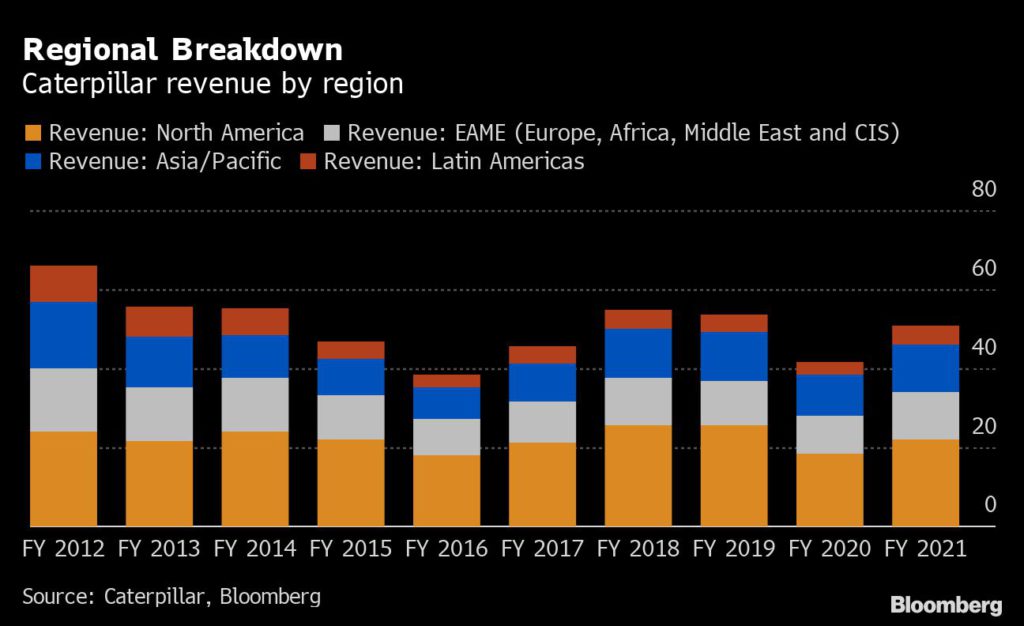Bloomberg News | March 15, 2022

Image source: Caterpillar Inc.
Caterpillar Inc. continues to use Russia as a supply-chain route, even after the company said it had suspended business with the country.

The construction machinery giant’s continued use of Russia for moving parts and equipment sheds new light on already-fragile global supply chains. It also shows how dependent the European Union and China are on shipping routes that traverse Europe’s largest nation by landmass.
An internal document outlining Caterpillar’s logistics and supply-chain activities, seen by Bloomberg, says the company’s rail shipments crossing Russia between Europe and China are operating as normal. Caterpillar began relying more on rail freight through Russia in 2021 when ocean freight became exceedingly tight and costly.
The Deerfield, Illinois-based producer’s ocean freight is being diverted to European ports, and European customs officials are then holding all that cargo destined for Russia for inspection, the document states. All air freight to Russia and Ukraine have been suspended.
Caterpillar spokeswoman Rachel Potts declined to comment.
The company on March 9 said it suspended operations at its manufacturing plants in Russia. The company document, however, shows that shipping through the nation not only hasn’t ceased but acts as a vital supply line for the global machinery producer.
The company moves parts and finished machines between Europe and China through Russia. Most of that is done by rail, a person familiar with the matter said.

Caterpillar stopped shipping parts and machines to its dealerships throughout Ukraine as Russia invaded the nation, according to the person. For now, anything destined for Ukraine is being stored at a warehouse in Belgium, where Ukraine’s dealerships usually store overflow, the person said.
The revelation that Caterpillar continues to use Russia as a transit route is significant, considering that Caterpillar doesn’t normally give out a lot of detail about physical shipping of its goods in Europe, Asia or elsewhere.
The parts and machines affected are used in everything from construction to mining to oil and gas. One concern for the company, suppliers and investors is that Russia could cut rail and road access to U.S. and European companies. Another worry is that tighter sanctions could force Caterpillar to use more costly and circuitous routes.
The global supply-chain crisis that arose last year already forced Caterpillar to shift a significant amount of its ocean freight between Asia and Europe to rail freight, according to the person.
Higher shipping costs could be offset by ballooning commodity prices, particularly in industrial metals, if mining companies use the extra cash to upgrade aging equipment. Caterpillar’s mining equipment business, which yields huge profit margins, accounted for almost one-fifth of sales last year.
Caterpillar reported annual revenue of about $51 billion in 2021, surging more than 20% from the prior year as economies reopened from the pandemic. In January, Andrew Bonfield, Caterpillar’s chief financial officer, said that China represents about 5% to 10% of sales.
(By Joe Deaux)
No comments:
Post a Comment